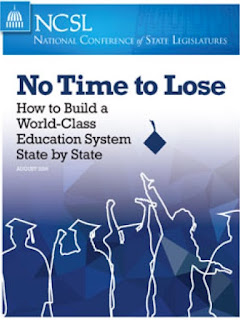This rally invitation
regards the controversial textbook authored by Jaime Riddle and Valarie Angle
titled, "Mexican American Heritage," that will get considered for
adoption by Texas' State Board of Education (SBOE) in their September meeting,
with a vote taking place at their November meeting. The rally takes
place on Tuesday, September 13th at 9:30AM in Austin, Texas at the William B.
Travis Building, 1701 North Congress.
It comes by way of Celina Moreno from MALDEF and includes several other related announcements as follows:
For ease, I've gone ahead and posted (see below) the joint statement and full MALC letter referenced in Celina's message. It's great to have great leadership on such matters in Texas.
Here's the Twitter hashtag that all should use for this protest: #RejectTheText
Angela
It comes by way of Celina Moreno from MALDEF and includes several other related announcements as follows:
Today, the Mexican American Legislative Caucus (MALC) and the Senate Hispanic Caucus issued a joint statement urging the SBOE to reject the Mexican American Heritage textbook. Here is the joint statement: https://www.facebook.com/TxSHC/photos/a.226038840829868.36511.225878577512561/820975221336224/.
Here is the full MALC letter: https://www.facebook.com/MALCTx/posts/10154242449492529
Also, here is the link to the Facebook event which announces the Sept. 13 rally and SBOE hearing and includes details: https://www.facebook.com/events/1827576007472052. Please share widely with your social media networks.
Thanks,
Celina
For ease, I've gone ahead and posted (see below) the joint statement and full MALC letter referenced in Celina's message. It's great to have great leadership on such matters in Texas.
Here's the Twitter hashtag that all should use for this protest: #RejectTheText
Angela













 A
media event was held Aug. 9 at the 2016 NCSL Legislative Summit to
release “No Time to Lose: How to Build a World-Class Education System
State by State” to the media.
A
media event was held Aug. 9 at the 2016 NCSL Legislative Summit to
release “No Time to Lose: How to Build a World-Class Education System
State by State” to the media.
